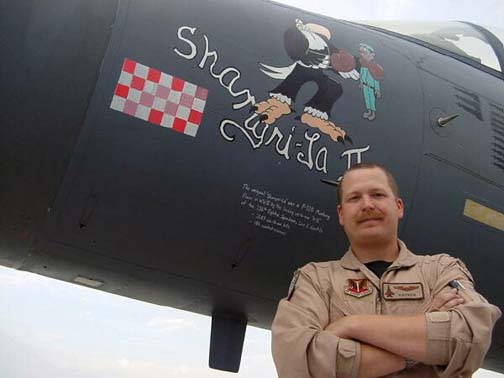Amado Aguiluz F. wrote:
Now that you mention it, everyone knows "kill" or victory markings became popular since the very begining of air warfare. I tend to believe, aircraft crews liked to paint markings of "kills", missions flown, or bombs dropped (WWII), not only as a pilot/squadron record, but also a matter of pride and perhaps as a morale booster?
Here's the photo of my and my jet from Iraq in 2003. Note the bomb markings on the right side of the photo. What do you think they mean -- missions flown? Bombs dropped? Targets killed?

Want to know the answer? Me, too! I think I remember my crew chief saying that it was a bomb mark for every sortie on which ordnance was expended, and the type of bomb painted on there was the largest one dropped on that particular sortie. To me, that is a strange thing to be keeping track of -- a far more interesting tally would be either overall missions flown or overall bombs dropped, or overall tonnage of bombs dropped. But, that is what my crew chief decided he wanted to track, so that is what ended up on the jet. Years from now I wonder what people in our shoes will think when they see that photo.
My point is, that in a vacuum it is impossible to really interpret the kill marks without talking to the person who painted them!
My interpretation of the single red slash over the HMS Invincible silhouette is that it was damaged but not sunk...is that correct? Who knows!





